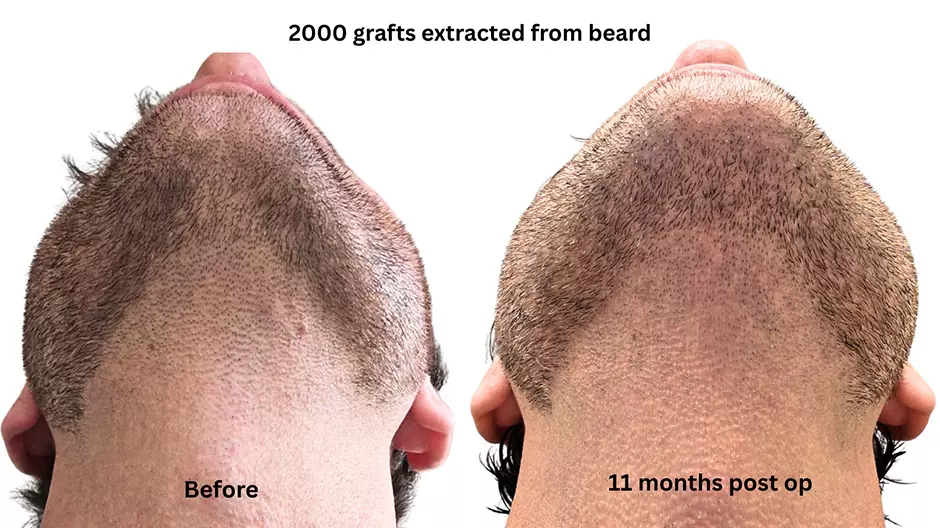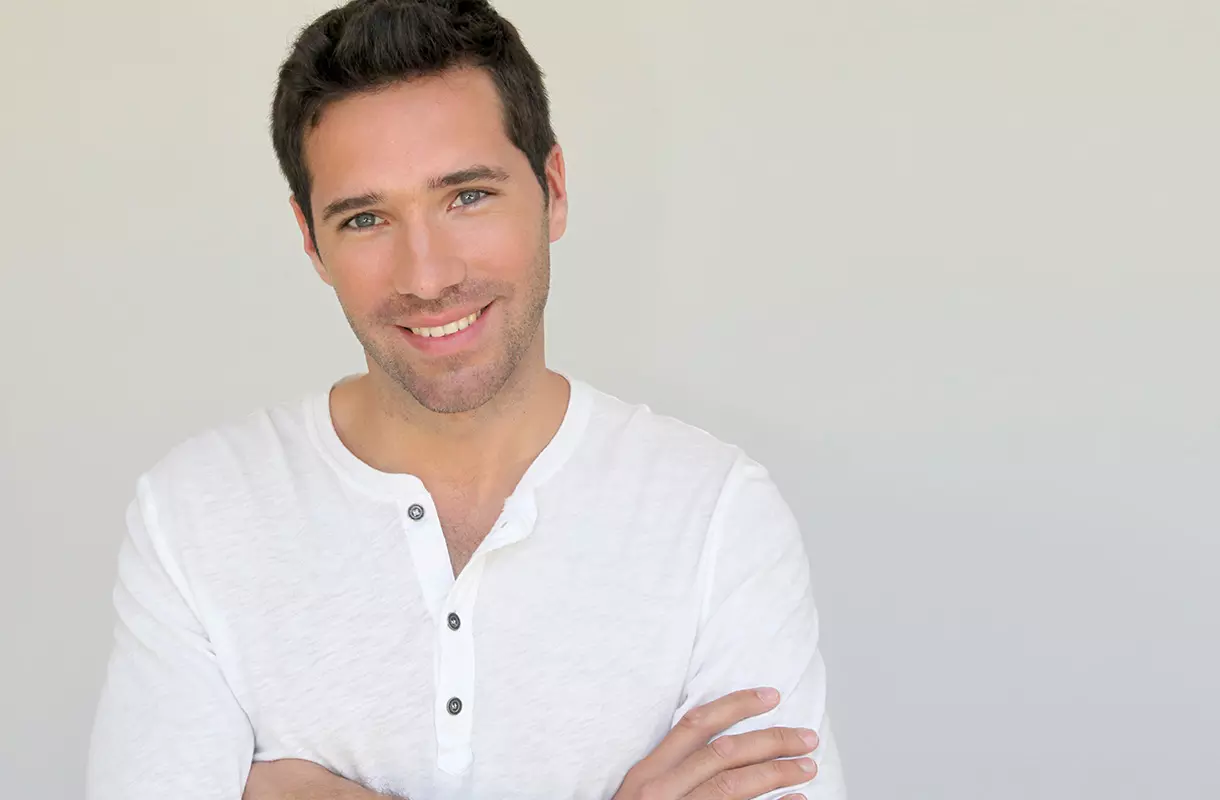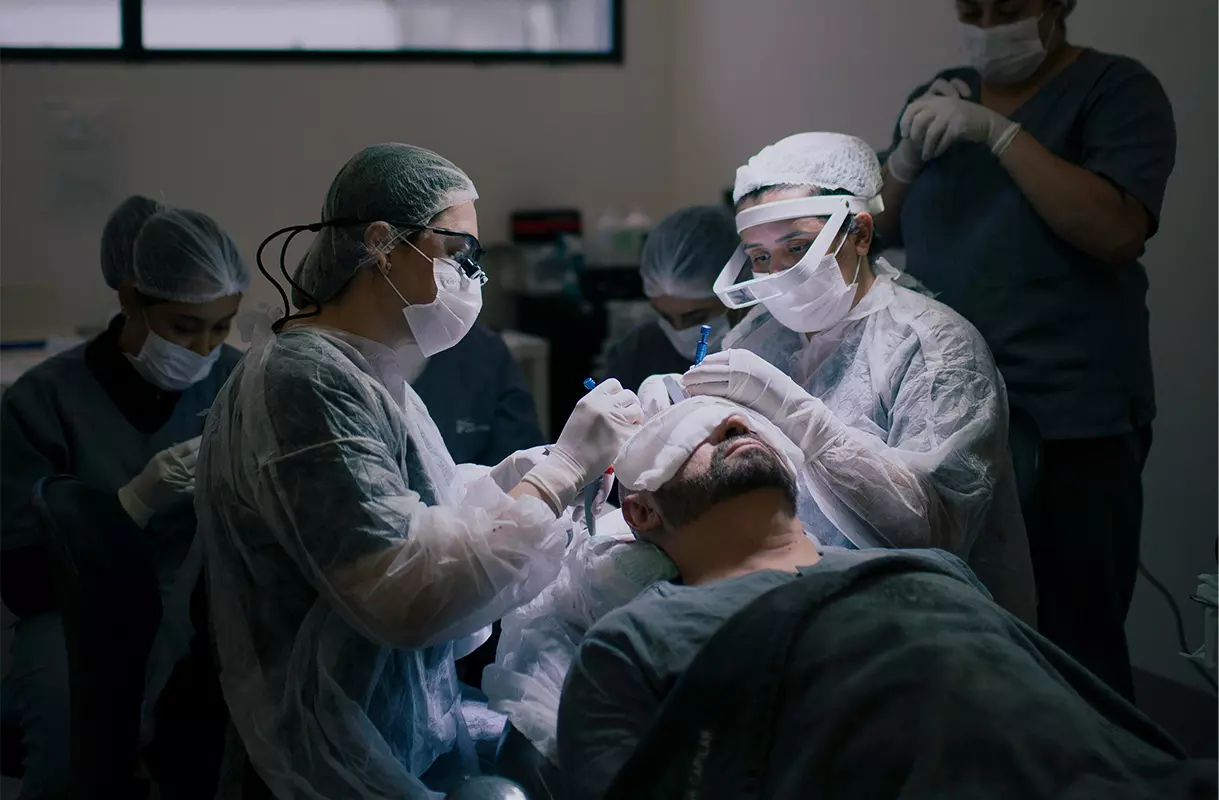Many patients assume they are "stuck with the hair they have" due to genetic hair loss or overharvesting from prior hair transplants, and because no viable hair exists on their scalp, they are not a hair transplant candidates. This feeling of "hopelessness" translates into other areas, and patients can resort to hairstyles reflecting this mindset.
There is another solution for those who would contemplate a hair transplant if they had the donor's hair. Although there has been some question regarding the efficacy of this procedure, advances in technology have made beard hair a very reliable source of hair for transplantation, and HT&RC has become the destination for beard to scalp transplant procedures.
We have patients from all over the country travel to HT&RC for Dr. Gray’s expertise and skill and there are a few advantages to this particular procedure that make it more ideal for travel.
Why Use Beard Hair? Healthy Donor Supply
Each beard hair follicle has nearly twice as many cuticle layers as hair follicles on the scalp. On average, the diameter of each beard hair is 125 microns versus scalp hair which is 69 microns. When looking at various racial groups like Caucasians, Asians, and Africans, the average beard hair diameter is 70-100% greater when compared to scalp hair for each group.
Although we are taking hair from your "beard," – the actual donor hair we use is the area "under the angle of the mandible." If you look in the mirror and tilt your head back, the area starting below the chin is harvested "beard hair" for transplant. However, Dr. Gray does not overharvest this area, so some neck hair will remain to shave afterward. Follicles are taken from this area in case the patient wants to grow facial hair at some point.
*Some patients prefer to harvest only from a specific area under the chin, as it aligns with their facial hair style. Depending on the patient and the amount of grafts needed to achieve their stated goals, these parameters may limit what is feasible to accomplish in a single procedure.
Overall, there are not many limitations as to where you can put beard hair. Beard hair grows in single thick units (unlike scalp hair which grows in tiny little groups of 1-4 hairs, each called "follicular units"), making beard follicles an exceptional alternative to fill in areas on the scalp. However, using beard hair to totally recreate a new hairline is not feasible as it would not look natural (some fill-in can still be achieved). (For patients who wish to create a new hairline, Dr. Gray's rule of thumb is to exhaust scalp donor hair first.)

How We Do It: Follicular Unit Extraction
When taking donor hair from the beard, the beard can provide between 2000 to 3000 single follicular grafts for the Follicular Unit Extract (FUE) harvesting technique. This method uses sharp punches and shallow insertions of up to 2mm deep to extract the follicles.
Harvesting beard hair is different than harvesting hair from the scalp and this can be challenging for a few reasons:
Change in angles of facial hair-bearing areas means difficulty accessing those areas. Also, hair can exit the beard in a wide variety of angles (as opposed to exiting the scalp) and finding the correct extraction angle is crucial for a successful hair transplant.
The skin in some regions of the face is much more mobile, which makes stabilizing the skin to extract grafts more difficult.
It is imperative to use a hair transplant surgeon experienced with extracting donor hair from different sources on the body other than the scalp. Since Hair Protein Growth Factors are included in every surgery, healing time and scarring are minimized.
Our follicular unit extraction (FUE) procedure:
- Local anesthesia is used on the beard and scalp to provide the patient with the most comfortable experience possible.
- Small, circular punch incisions are made around a follicular unit in the donor area.
- The single follicular units are extracted from the beard and soaked in nanoparticles (formerly called exosomes) and Protein Growth Factors.
- Tiny incisions in the scalp are made for recipient sites of the hair follicles using a fine blade.
- Individual follicular units are placed into the recipient sites in the areas of hair loss.
- Protein Growth Factors are applied to promote healing and stimulate hair growth.
- Very long-acting local anesthetic is injected for prolonged pain relief after the procedure.
- Note to out of town patients: Because we are not harvesting hair from the back of the head, the procedure is less painful which makes being seated while traveling home a little easier (no incisions to watch out for in the traditional donor area).
Faster Recovery
Because all harvesting is executed below the chin and mandibular angle, no noticeable donor site is visible after the first week (as patients often shave this particular donor area), the skin is typically just a little pink.
I’m really impressed with how invisibly those FUE’s (grafts) were extracted from under the chin and neck. I was expecting a lot of mayhem (and) that didn’t happen. It was also nice to have the grafts implanted without shaving my head. After one week, I could wash my hair and look normal.
–A Recent Beard-To-Scalp Transplant Patient
The patient initially contacted us having had three prior transplants at other centers where grafts were harvested from the scalp.
Less Painful: Easier Anesthesia Application
The anesthesia for beard harvesting is not difficult to achieve. Dr. Gray has used a superficial cervical plexus block with Marcaine .25% plus epinephrine to create a long-acting block. This will anesthetize most of the neck under the mandibular angle but can be supplemented with local anesthesia along the mandibular angle. It is easy to “top up” the anesthesia, and the block is faster to perform than a total ring block which is done for traditional scalp hair extractions.
- Note to out of town patients: We usually start at 7:30am on procedure day and most patients fly/travel home the same day. Because the neck is easier to numb, the transplants go a little quicker, and usually, we are done shortly after lunch.
Who Is a Candidate for Beard to Scalp Transplant?
Beard to scalp is an excellent option for those who have already had one hair transplant or more and want to add density in different areas. Or, if you've never had a transplant but don't have great natural donor hair, you can still achieve some fill-in with beard hair. The only limitation is the number of grafts that can be harvested from the beard. Dr. Gray generally harvests up to 3000 grafts from a very dense beard and 1500-2000 grafts from regular density. There is beard hair left, so the patient has the option for future transplantation.
For Out-Of-Town Patients
Many patients fly in from other states to have a beard to scalp procedure done. Depending on traffic, we are about an hour and a half south of the Atlanta airport. We recommend flying in the evening before, arriving in Macon around dinner time. There are a few hotels seconds away from our office. We usually start at 7:30 am on procedure day, and most patients fly/travel back the same day. Because the neck is easier to numb, the transplants go a little quicker, and usually, we are done shortly after lunch.
Traveling home is generally not a problem. You can wear a hat home on top of the dressing we provide post-op, and a standard facemask over the ears should not be uncomfortable to wear while on the plane. Dr. Gray injects a long-lasting numbing agent before you leave our office, so as far as pain, your head should be numb well into the next day. Also, there is no incision in the back of the scalp where the typical "donor area" is, making traveling while seated more comfortable.
Am I a Candidate?
If you are interested in speaking with Dr. Gray about a beard to scalp transplant, fill out the form below and include pictures from the below angles:
- Clear view of your area(s) of concern
- Area below your mandible/chin (tilt your head back and take a picture of the donor area you are interested in using)
(Any concerning areas of hair loss other than these 1-2 should also be photographed.)







